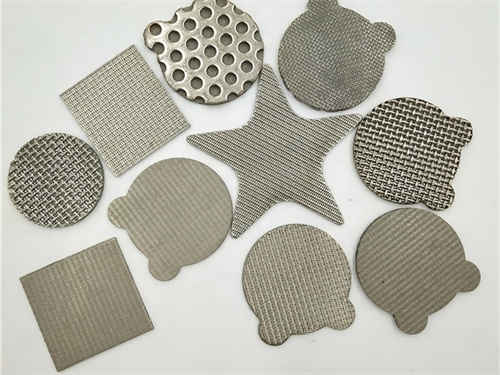Titanium Fiber Felt for PEM is a porous material made of titanium alloy fibres by special processes such as lay-up and sintering. It consists of micron-sized titanium fibres with a high degree of three-dimensional reticulation.The unique features of Titanium Fiber Felt for PEM are its high porosity, large specific surface area, and good mechanical and chemical properties, which are especially excellent in high-temperature, highly corrosive environments.
Key features of Titanium Fiber Felt for PEM:
Material Composition:
Titanium (Ti) or titanium alloys, common titanium alloy compositions include pure titanium (Grade 1, Grade 2) and titanium alloys (e.g. Ti-6Al-4V). The core characteristics of this material are light weight, high strength and corrosion resistance.
Structural characteristics:
Three-dimensional mesh structure: Titanium Fiber Felt for PEM consists of interwoven fibres that form a three-dimensional mesh structure, which provides good gas or liquid diffusion channels, and is often used as a gas diffusion layer (GDL) or filtration layer.
High porosity: Typical porosity ranges from 50% to 80%, with a uniform pore structure, which helps to enhance its gas-liquid mass transfer capability, especially suitable for applications requiring efficient mass transfer, such as hydrogen generation.
Micron-sized fibres: Titanium fibres are typically between 5-50 μm in diameter, providing a very fine and uniform pore structure that enhances surface area and catalytic activity.
Physical Properties:
High strength and abrasion resistance: Titanium Fiber Felt for PEM has high mechanical strength and abrasion resistance, which is suitable for the more demanding working environment.
High Temperature Resistance: Its high temperature resistance can reach 900℃ or even higher, suitable for working under high temperature conditions.
Chemical properties:
Corrosion resistance: Titanium and its alloys have very strong corrosion resistance, especially for acid, alkali and seawater and other corrosive liquids have good corrosion resistance. This property of titanium makes it very durable in chemically reactive environments.
Oxidation Protection: Titanium naturally forms a very thin but strong protective film of titanium dioxide (TiO₂), which makes it more stable in oxidising environments.

Titanium Fiber Felt for PEM Applications:
Titanium Fiber Felt for PEM has important applications in a number of areas, especially where corrosion resistance and high strength are required. Key applications include:
Hydrogen and Fuel Cells:
PEM Water Electrolysis: Titanium Fiber Felt for PEM is commonly used as an anode Gas Diffusion Layer (GDL) in Proton Exchange Membrane (PEM) water electrolysis for hydrogen production.
Hydrogen Fuel Cells: In hydrogen fuel cells, Titanium Fiber Felt for PEM is used as a gas diffusion layer to support the efficient transport of hydrogen and oxygen to improve cell efficiency.
Catalyst Support:
In some catalytic reactions, Titanium Fiber Felt for PEM is used as a catalyst support material, especially where high surface area and resistance to high temperature and corrosion are required.
Filtration & Separation:
Titanium Fiber Felt for PEM is commonly used in a variety of filters due to its high porosity and excellent mechanical strength, especially in high-temperature, highly corrosive environments in the chemical and petrochemical industries.
Aerospace & Military:
Titanium Fiber Felt for PEM’s high strength and corrosion-resistant properties make it widely used in aerospace and military applications as well, especially for extreme operating environments and challenging requirements such as high pressure and low temperature.
Summary:
Titanium Fiber Felt for PEM is a lightweight, high-strength, corrosion-resistant material with excellent gas-liquid mass transfer properties and good mechanical properties. Its special three-dimensional mesh structure and high porosity make it ideal for many demanding applications (e.g. water electrolysis, fuel cells, etc.).